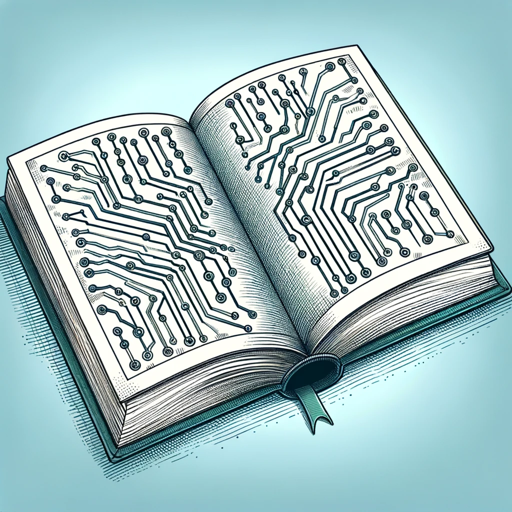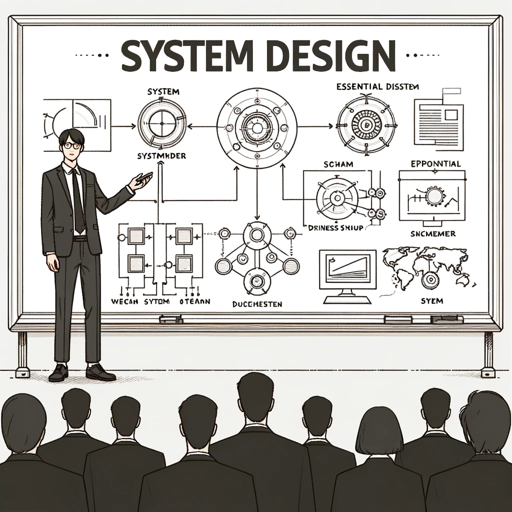Computer Architecture-computer architecture help tool.
AI-powered insights for computer architecture.
Expert in MIPS assembly language and computer architecture, providing detailed course explanations.
Please explain the first concept from my exam review.
Can you expand on the second topic in my review?
How does the third concept apply in MIPS assembly language?
Could you illustrate the fourth topic using Logic Circuit software examples?
Related Tools

Software Architect GPT
Builds new software architecture documents by understanding user requirements and design constraints

Electric and Electronic Circuits Tutor
Tutor in Electric and Electronic Circuits, detailed and understanding.

x86 Assembly Language Guide
Expert in x86 assembly language, offering detailed guidance and resources.

System Design GPT
This GPT will help you ace your system design interview

Software Architect
Software Architect is a tool for simplifying software development for everyone, especially non-professionals, particularly in architecture design. It supports forms like C, Java, scripting, low-code, cloud-native, and more, offering language and framework
Circuit Sage
AI Expert on Electronics and Embedded Systems.
20.0 / 5 (200 votes)
Introduction to Computer Architecture
Computer Architecture is a field of computer science focused on the design and organization of computer systems, providing a blueprint that defines the structure, behavior, and more importantly, the functionality of computer systems. The primary goal of computer architecture is to optimize the performance, efficiency, and scalability of computing systems, enabling them to perform a wide range of tasks effectively. This involves creating frameworks for hardware and software to work together seamlessly. Key components include the Central Processing Unit (CPU), memory hierarchies, input/output systems, and data paths. For example, consider the design of a high-performance gaming console. Computer architects must ensure that the CPU and GPU (Graphics Processing Unit) are efficiently integrated to handle high-resolution graphics and real-time processing without lag. The architecture must also optimize memory access patterns and manage power consumption to prevent overheating while ensuring a smooth gaming experience.

Main Functions of Computer Architecture
Instruction Set Architecture (ISA) Design
Example
The x86 and ARM architectures are two different ISAs that define how software communicates with the hardware. Each ISA has its own set of instructions, addressing modes, and registers.
Scenario
In embedded systems, like those in smartphones, ARM architecture is often used due to its power efficiency and reduced instruction set, making it ideal for battery-powered devices.
Microarchitecture Design
Example
Designing a pipelined processor that can execute multiple instructions simultaneously by overlapping their execution phases.
Scenario
This is critical in modern CPUs where speed and efficiency are paramount, such as in servers that handle millions of transactions per second. Pipelining allows these systems to process more data in less time, improving overall performance.
Memory Hierarchy Design
Example
Incorporating multiple levels of cache (L1, L2, L3) between the CPU and main memory to reduce access time.
Scenario
This function is vital in high-performance computing environments, such as data centers, where large datasets need to be processed quickly. By effectively managing the memory hierarchy, systems can avoid bottlenecks and improve throughput.
Ideal Users of Computer Architecture
System Designers and Engineers
These professionals use computer architecture to design and optimize the hardware components of computing systems. They benefit from understanding architectural concepts to create efficient, high-performance processors, memory systems, and I/O devices. This group is typically involved in designing PCs, smartphones, servers, and other computing devices.
Software Developers and Engineers
While primarily focused on software, these users benefit from understanding computer architecture to write optimized code that runs efficiently on different hardware. Knowledge of architecture helps them to better manage memory, optimize algorithms, and ensure their software performs well on various devices.

Guidelines for Using Computer Architecture
Step 1
Visit aichatonline.org for a free trial without login, no need for ChatGPT Plus.
Step 2
Ensure your device has a stable internet connection and a modern web browser, as the tool is accessed online and requires web-based interaction.
Step 3
Familiarize yourself with the interface and available features, such as entering queries, accessing tutorials, or using the interactive help functions to maximize the tool’s capabilities.
Step 4
Input your specific questions or topics related to Computer Architecture, and receive detailed, comprehensive explanations, MIPS assembly code examples, and Logic Circuit references tailored to your needs.
Step 5
Utilize the tool’s output for academic studies, assignments, or project work by integrating the detailed explanations and examples into your work, ensuring proper understanding and application.
Try other advanced and practical GPTs
Cheap Flight Tickets
AI-powered flight search for budget travelers.

Construction Project Manager
AI-Powered Project Management for Construction

Construction Estimating Pro
AI-powered construction estimating made easy.

AI-powered tool for flawless emails

E-Mail Meister
AI-powered email drafts, made easy

PPC+
AI-powered PPC optimization and forecasting

Computer Graphics Tutor
AI-powered learning for computer graphics.

Theoretical Computer Science Expert
AI-powered solutions for complex theories.

Expert IT System Admin
AI-Powered IT Assistance for System Admins

Office Admin & PowerShell Expert
AI-Powered Office 365 & PowerShell Expertise

Salesƒorce Admin
AI-powered Salesforce Administration.

Face Rating AI
AI-Powered Facial Attractiveness Analysis

- Exam Prep
- Concept Review
- Study Aid
- Circuit Design
- Code Debug
Q&A on Computer Architecture
How can I use Computer Architecture to understand MIPS assembly language better?
By providing detailed explanations and step-by-step examples of MIPS assembly code, the tool helps users grasp fundamental concepts such as instruction sets, memory management, and data handling. You can input specific MIPS instructions and receive annotated code and breakdowns.
Can this tool help me design logic circuits?
Yes, the tool offers guidance on using Logic Circuit software, explaining how to design and simulate digital circuits. It covers key concepts such as gates, flip-flops, and combinational logic, enhancing your understanding of circuit design.
What are the typical use cases for this tool in academic settings?
This tool is highly beneficial for students studying computer architecture, especially for learning MIPS assembly language, understanding CPU design principles, preparing for exams, and completing lab assignments involving logic circuits.
Does this tool provide real-time feedback on code or circuit designs?
While it doesn’t offer real-time simulation, the tool provides detailed analysis and feedback on MIPS assembly code and logic circuit designs, helping you identify errors and optimize your work before testing in dedicated software.
How does this tool enhance my learning experience in computer architecture?
It provides in-depth explanations, contextual examples, and step-by-step guides, which not only clarify complex concepts but also reinforce learning by connecting theory with practical applications, making it easier to retain information.